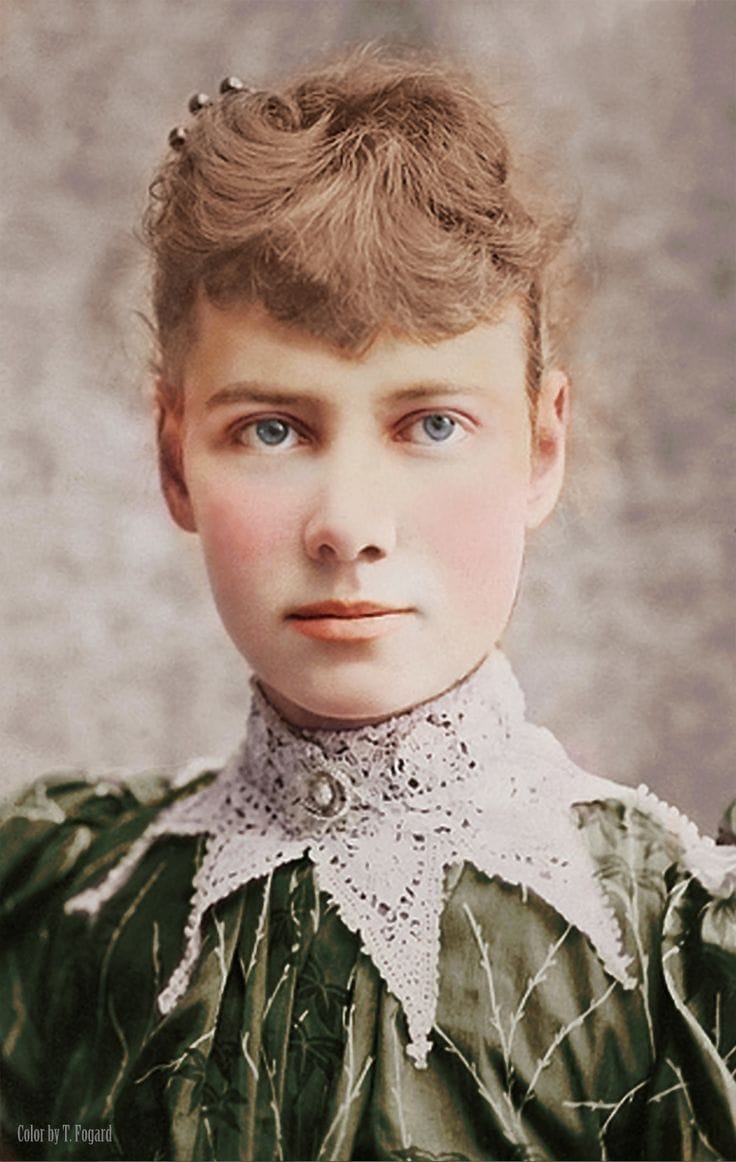
Added to
30 votes
Amazing Women You've Probably Never Heard Of
(16 items)Person list by kathy
Published 6 years, 8 months ago  2 comments
2 comments
 2 comments
2 commentsVotes for this image - View all
Elizabeth Cochran Seaman (May 5th 1864 – January 27th 1922), better known by her pen name Nellie Bly, was an American journalist who was widely known for her record-breaking trip around the world in 72 days, in emulation of Jules Verne's fictional character Phileas Fogg, and an exposé in which she utilized her female paroxysm to study a mental institution from within.
She was a pioneer in her field and launched a new kind of investigative journalism.
Bly was also a writer, industrialist, inventor and a charity worker.
While at Joseph Pulitzer's newspaper the New York World, she took an undercover assignment for which she agreed to feign insanity to investigate reports of brutality and neglect at the Women's Lunatic Asylum on Blackwell's Island.
Committed to the asylum, Bly experienced its conditions firsthand. The food consisted of gruel broth, spoiled beef, bread that was little more than dried dough, and dirty undrinkable water. The dangerous patients were tied together with ropes. The patients were made to sit for much of each day on hard benches with scant protection from the cold. Waste was all around the eating places. Rats crawled all around the hospital. The bathwater was frigid and buckets of it were poured over their heads. The nurses behaved obnoxiously and abusively, telling the patients to shut up, and beating them if they did not. Speaking with her fellow patients, Bly was convinced that some were as "sane" as she was.
After ten days the asylum released Bly at the New York World's behest. Her report, later published in book form as Ten Days in a Mad-House, caused a sensation and brought her lasting fame.
While physicians and staff worked to explain how she had deceived so many professionals, a grand jury launched its own investigation into conditions at the asylum, inviting Bly to assist. The jury's report recommended the changes she had proposed.
Its call for increased funds for care of the insane prompted an $850,000 increase in the budget of the Department of Public Charities and Corrections. The grand jury also made sure that future examinations were more thorough so that only the seriously ill went to the asylum.
She later wrote stories on Europe's Eastern Front during World War I and covered the Woman Suffrage Parade of 1913.
Bly was an inventor, receiving U.S. patent 697,553 for a novel milk can and U.S. patent 703,711 for a stacking garbage can, both under her married name of Elizabeth Cochrane Seaman. For a time she was one of the leading women industrialists in the United States.
She was a pioneer in her field and launched a new kind of investigative journalism.
Bly was also a writer, industrialist, inventor and a charity worker.
While at Joseph Pulitzer's newspaper the New York World, she took an undercover assignment for which she agreed to feign insanity to investigate reports of brutality and neglect at the Women's Lunatic Asylum on Blackwell's Island.
Committed to the asylum, Bly experienced its conditions firsthand. The food consisted of gruel broth, spoiled beef, bread that was little more than dried dough, and dirty undrinkable water. The dangerous patients were tied together with ropes. The patients were made to sit for much of each day on hard benches with scant protection from the cold. Waste was all around the eating places. Rats crawled all around the hospital. The bathwater was frigid and buckets of it were poured over their heads. The nurses behaved obnoxiously and abusively, telling the patients to shut up, and beating them if they did not. Speaking with her fellow patients, Bly was convinced that some were as "sane" as she was.
After ten days the asylum released Bly at the New York World's behest. Her report, later published in book form as Ten Days in a Mad-House, caused a sensation and brought her lasting fame.
While physicians and staff worked to explain how she had deceived so many professionals, a grand jury launched its own investigation into conditions at the asylum, inviting Bly to assist. The jury's report recommended the changes she had proposed.
Its call for increased funds for care of the insane prompted an $850,000 increase in the budget of the Department of Public Charities and Corrections. The grand jury also made sure that future examinations were more thorough so that only the seriously ill went to the asylum.
She later wrote stories on Europe's Eastern Front during World War I and covered the Woman Suffrage Parade of 1913.
Bly was an inventor, receiving U.S. patent 697,553 for a novel milk can and U.S. patent 703,711 for a stacking garbage can, both under her married name of Elizabeth Cochrane Seaman. For a time she was one of the leading women industrialists in the United States.
 Login
Login
